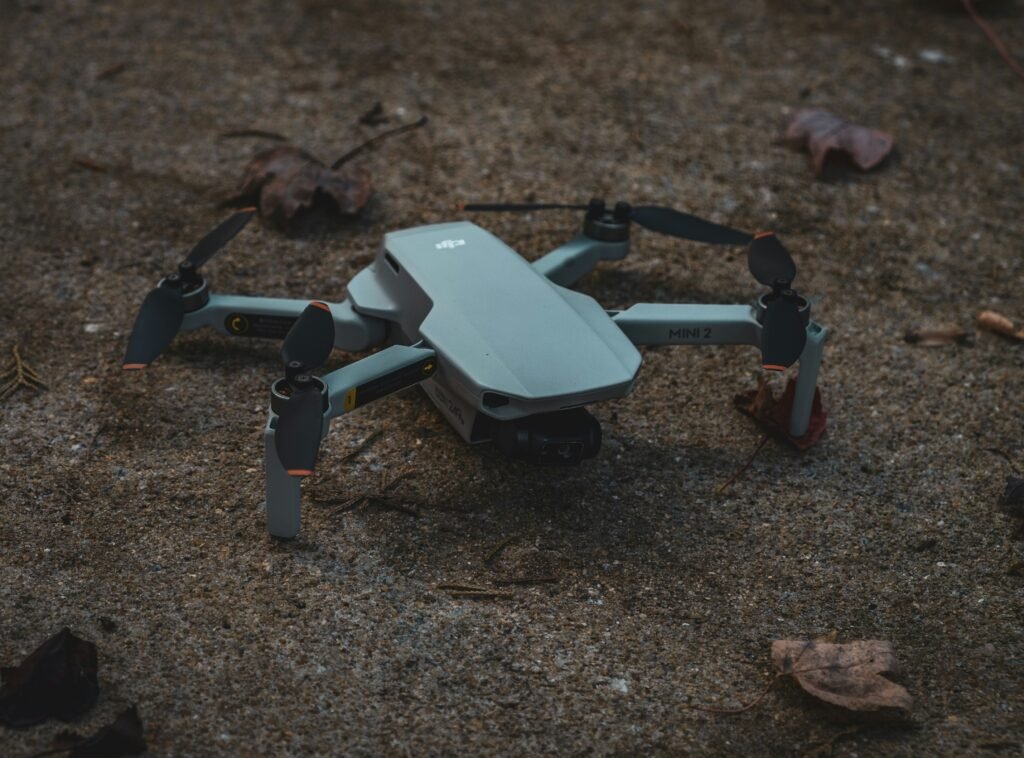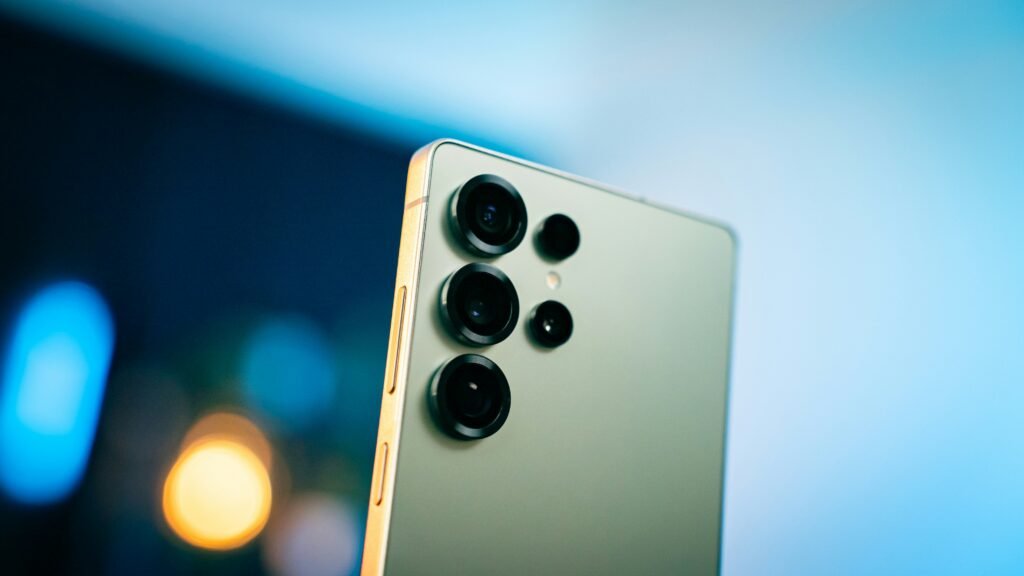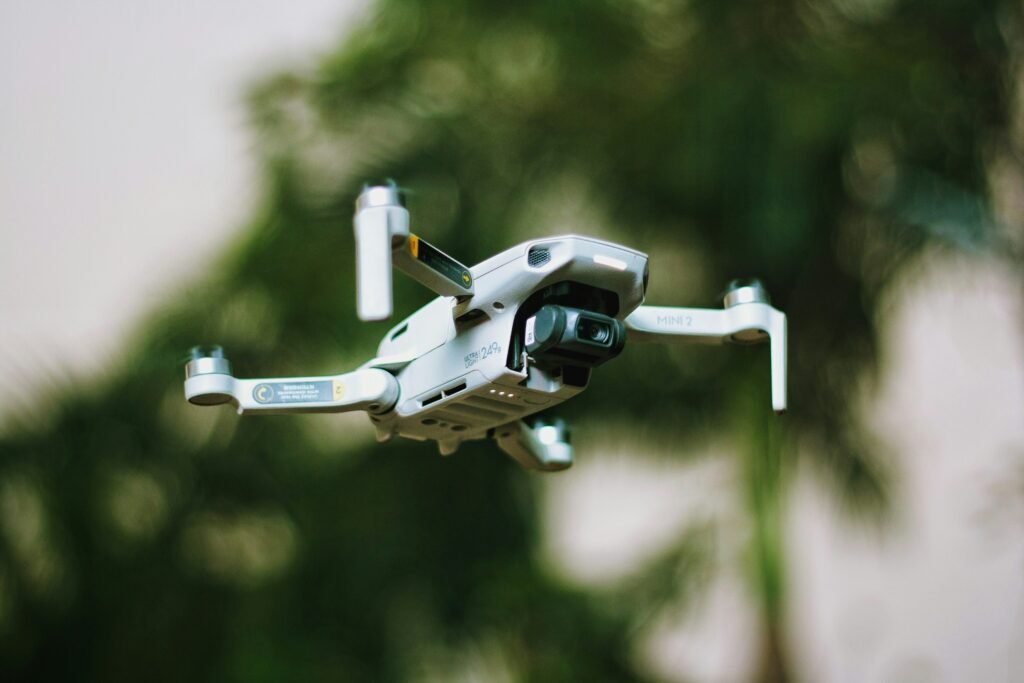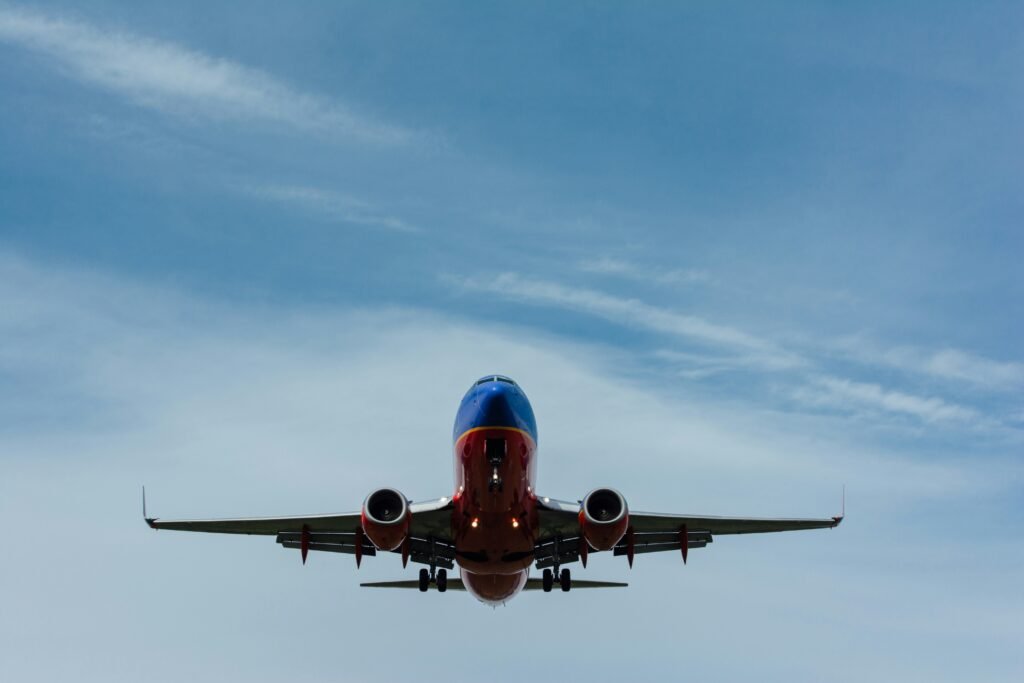
Introduction to 4K Drones
4K drones have revolutionized the field of aerial photography and videography, offering high-definition imaging capabilities that appeal to both enthusiasts and professionals alike. The term “4K” refers to a resolution of approximately 3840 x 2160 pixels, which is four times the standard 1080p resolution. This enhanced clarity and detail are particularly significant when capturing expansive landscapes, intricate architectural details, or dynamic scenes from the air.
One of the primary features that set 4K drones apart from their lower-resolution counterparts is the ability to record video and capture still images in stunning clarity. This capability allows users to produce content that meets high industry standards, making these drones ideal for filmmakers, real estate agents, and content creators looking to elevate their visual storytelling. The integration of advanced camera technology within these flying devices often includes features like image stabilization, allowing for smooth recordings even in windy conditions.
The advancements in drone technology have made 4K-capable models increasingly accessible. Many manufacturers are now offering budget-friendly options with 4K capabilities, enabling hobbyists and amateur videographers to explore this cutting-edge technology without breaking the bank. Additionally, enhancements in battery life and flight stability have improved usability and increased the overall experience of flying these advanced machines.
Another important aspect of 4K drones is their versatility. They can be equipped with various sensors to assist in numerous applications, from surveying and mapping to recreational photography. As technology continues to evolve, the possibilities for 4K drone use are expanding every day, solidifying their status as essential tools for modern aerial cinematography and photography.
The Importance of Ultra High Definition (UHD)
Ultra High Definition (UHD), especially in the form of 4K resolution, has significantly transformed the landscape of drone technology. This evolution is vital for various industries that rely on high-quality visuals, as the level of detail captured in 4K offers substantial advantages over standard definitions. Drones equipped with 4K cameras deliver stunning imagery characterized by enhanced clarity and vividness, thereby elevating the overall quality of aerial footage.
One of the primary benefits of 4K imaging is the ability to capture intricate details. In environments such as real estate, high-resolution footage allows potential buyers to appreciate the finer aspects of a property, effectively showcasing its unique features. With 4K, real estate professionals can produce virtual tours that reflect an accurate depiction of interiors and exteriors, leading to more informed decisions by buyers. This heightened level of detail can impact sales positively, demonstrating that UHD plays a crucial role in enhancing marketing strategies.
Moreover, the filmmaking industry has embraced 4K resolution for its unparalleled ability to create cinematic experiences. High-definition aerial shots contribute significantly to visual storytelling, as they allow filmmakers to capture landscapes and action sequences in vivid detail. The resulting footage not only elevates the production value but also attracts more viewers seeking cutting-edge visual narratives. In documentaries, particularly those focused on nature conservation, UHD imagery enhances the emotional connection between the audience and the subject matter, promoting awareness of environmental issues.
In conclusion, the integration of 4K technology in drone usage is reshaping content creation across various fields. By providing stunning visuals and intricate details, UHD enables creators in real estate, filmmaking, and nature conservation to engage their audiences more effectively, underlining the importance of this advanced technology in enhancing the overall quality of multimedia presentations.
Top Features to Look for in a 4K Drone
When selecting a 4K drone, several key features should be thoroughly assessed to ensure you make a well-informed choice. First and foremost, the camera specifications are critical. A high-quality 4K camera with a large sensor and wide aperture allows for superior image clarity and detail, which is essential for capturing stunning aerial footage. Look for drones that provide adjustable settings for ISO, shutter speed, and white balance, as these features allow for greater creative control over the footage you capture.
Next, consider battery life and flight time. The average flight time for most 4K drones ranges from 20 to 30 minutes on a single charge. Opt for models that utilize high-capacity batteries, as they offer the potential for longer flight durations. Understanding how to manage flight time effectively through the drone’s battery monitoring capabilities is equally important to prevent unexpected landings.
The control range of the drone is another essential factor. A longer control range allows for more expansive flying experiences, helping videographers capture diverse landscapes without losing connection with the drone. Most modern 4K drones support extended ranges through advanced transmission technologies, so investigating the performance specifications of potential models is advisable.
Stabilization technology plays a vital role in the quality of the footage. Look for drones equipped with 3-axis gimbals or advanced electronic image stabilization systems. These features help ensure that your videos are smooth and free from unwanted shakes, even in windy conditions.
Finally, assess the ease of use. Many high-quality 4K drones come with user-friendly interfaces and intuitive controls that cater to both beginners and experienced pilots. Features such as GPS assistance, automated flight modes, and an easy-to-navigate mobile app contribute to a seamless flying experience.
Popular Brands and Models of 2026
As technology continues to advance, the 4K drone market in 2026 has seen a significant evolution in both brands and models, catering to various user needs. Several brands have established themselves as leaders, consistently delivering high-quality drones that integrate advanced features and cutting-edge technology. Among these, DJI remains at the forefront, known for its exceptional imaging capabilities and robust flight performance. The DJI Mavic 3, for instance, offers a dual-camera system, allowing users to capture stunning 4K video and high-resolution stills with exceptional clarity, making it a favorite among both amateur and professional photographers.
Another prominent name in the industry is Autel Robotics. The Autel EVO Lite series has gained considerable attention for its user-friendly interface and impressive flight time. These drones are equipped with high-performance sensors and can produce high-quality aerial footage. Users have praised the EVO Lite for its ability to operate seamlessly in various weather conditions, which enhances its usability for outdoor adventures.
Parrot has also made strides in the market with its Anafi series, which features a lightweight design and a 4K camera with a 180-degree tilt gimbal. This model is favored for its portability and ease of use, particularly among travelers and outdoor enthusiasts. Furthermore, Parrot’s commitment to sustainable materials and energy efficiency appeals to environmentally conscious consumers.
In addition to these established brands, newcomers such as Skydio are redefining the sector with innovations focused on autonomous flying capabilities. The Skydio 2 is particularly noted for its obstacle avoidance technology, allowing for dynamic filming while continuously adapting to its surroundings. Such features enhance the drone’s functionality, making it suitable for a range of applications, from cinematic productions to recreational use.
In summary, the diverse offerings from these leading brands underscore the dynamic landscape of the 4K drone market in 2026, catering to the varied needs of consumers while pushing technological boundaries.
Price Range and Budget Considerations
In 2026, the market for 4K drones is diverse, catering to a wide variety of users ranging from beginners to professionals. The price of 4K drones can vary significantly depending on features, camera quality, and build quality, making it essential for buyers to understand their options. As a general guide, budget-friendly models can be found in the price range of $300 to $800. These drones typically offer basic functionality and decent 4K video quality, making them a suitable choice for hobbyists and those new to drone flying.
In the mid-range segment, which typically spans from $800 to $1,500, buyers can expect added features such as better battery life, enhanced stability, and advanced camera capabilities. These drones can cater to content creators who require reliable performance and more sophisticated imaging options. Notably, these models often include features like obstacle avoidance and improved GPS functionality, which can significantly enhance the flying experience.
On the higher end of the spectrum, 4K drones priced above $1,500 are designed for professionals who demand exceptional quality and performance. These models frequently come equipped with high-end cameras, superior stabilization systems, and advanced flying modes that allow for cinematic filming. Additionally, many professional-grade drones offer features such as obstacle detection and automated flight paths, which justify the higher price point through enhanced control and convenience.
When setting a budget for a 4K drone, it is crucial to assess not only your financial constraints but also your intended use. For beginners, it is advisable to start with a more affordable option and gradually invest in higher-quality models as skills and experience grow. Investing in a reputable brand also often correlates with better customer service and support, which may be invaluable in addressing any malfunctions or issues that arise during use.
Regulations and Safety Considerations
As the popularity of 4K drones continues to soar, understanding the regulatory landscape is paramount for both novice and experienced pilots. Compliance with aviation regulations is crucial, ensuring safe operations and the protection of public airspace. In many countries, the operation of drones is governed by national aviation authorities. In the United States, for instance, the Federal Aviation Administration (FAA) mandates that operators must register their drones weighing over 0.55 pounds. This registration not only helps in identifying the drone’s owner but also plays a critical role in maintaining accountability in case of incidents.
Moreover, obtaining the necessary licenses is a significant aspect of compliant drone operation. Pilots intending to use drones for commercial purposes are required to secure a Remote Pilot Certificate, which involves passing an initial aeronautical knowledge test. This certification process ensures that operators possess a fundamental understanding of aviation principles and safety measures related to drone usage. Likewise, in various other regions around the globe, equivalent certifications and operating licenses are required, emphasizing the global need for educational and operational preparedness.
Safety guidelines are equally essential in fostering a secure drone flying environment. Operators should adhere to altitude limitations, usually capped at 400 feet above ground level, and maintain visual line-of-sight with their drones at all times. Furthermore, pilots must avoid restricted airspace, such as near airports and military zones, and be wary of flying over gatherings of people, ensuring that they comply with local laws governing such activities. Advanced technology utilized in 4K drones often includes fail-safe mechanisms and geo-fencing capabilities to enhance compliance with these regulations, minimizing risks significantly.
In conclusion, navigating the regulatory and safety framework governing drone operation is essential for every pilot. By understanding license requirements, adhering to safety guidelines, and remaining aware of operational restrictions, drone enthusiasts can enjoy their flying experience while prioritizing safety and legal compliance.
Applications of 4K Drones
The advent of 4K drone technology has significantly changed various industries by enhancing data collection and providing new perspectives. One of the most well-known applications is in cinematography, where 4K drones are employed to capture high-definition aerial footage that was previously challenging to achieve. Filmmakers leverage this technology to gain dramatic angles and stunning visuals, enriching storytelling and enhancing viewer experiences.
Additionally, agriculture has embraced 4K drones for precision farming. Equipped with advanced sensors, these drones allow farmers to monitor crop health, assess soil conditions, and optimize irrigation systems. By analyzing the captured high-resolution imagery, farmers can make informed decisions that ultimately lead to increased yields and reduced environmental impact.
In the realm of surveying and mapping, 4K drones have revolutionized traditional methods. They offer quick and efficient means of collecting data over large areas, significantly reducing the time needed for land surveys. Professionals use these drones to create detailed topographic maps and 3D models. The accuracy and detail provided by 4K imaging are invaluable for urban planning and infrastructure development.
Furthermore, inspection tasks, particularly in the energy sector, utilize 4K drones for monitoring assets such as wind turbines and power lines. This method is not only safer but also more cost-effective than traditional inspection methods, allowing for timely maintenance and management of critical infrastructure.
Moreover, the use of 4K drones in real estate is becoming prominent. Real estate professionals employ these drones to present properties from captivating angles, enhancing marketing efforts with visually compelling content that can help potential buyers visualize a property’s potential. As technology continues to advance, the applications of 4K drones are set to expand across various sectors, driving innovation and improving operational efficiency.
User Experiences and Reviews
The evolving landscape of 4K drones in 2026 has brought with it a diverse array of user experiences, reflecting both the strengths and weaknesses of various models. Enthusiasts and professionals alike have shared their insights, helping potential buyers navigate the vast market. One notable model, the DJI Air 2S, has garnered praise for its exceptional image quality and user-friendly interface. According to users, the drone’s 1-inch sensor captures stunning 4K footage, even in low light conditions, making it a popular choice for aerial photography. Many have highlighted the impressive 31-minute flight time and robust obstacle avoidance technology, which contribute to a hassle-free flying experience.
Conversely, some users have voiced concerns regarding the DJI Air 2S’s price point, which is relatively high compared to other models. This sentiment is echoed across various user reviews, suggesting that while the performance may justify the cost for serious hobbyists and professionals, casual users might find more budget-friendly alternatives that meet their needs.
Additionally, the Autel Robotics EVO Lite has been garnering favorable feedback for its versatility and intelligent flight modes. Users have appreciated features such as the adjustable aperture, which enhances creative control over photography and videography. However, some reported issues with firmware updates causing temporary functional loss, leading to frustration among users who rely on the drone for professional work.
While many users laud the overall build quality and battery longevity of the Skydio 2, some have noted challenges with connectivity and remote operation. Drones equipped with advanced tracking capabilities have impressed users, but interference and signal stability have occasionally hindered performance during outdoor shoots.
In conclusion, the experiences shared by users of various 4K drones in 2026 offer invaluable insights. Different models cater to varying preferences and requirements, emphasizing the need for potential buyers to thoroughly assess their specific needs and consider user reviews for informed decisions.
Future Trends in Drone Technology
The evolution of drone technology continues at an unprecedented pace, particularly in the realm of 4K drones. As we look toward the future, several key trends are poised to shape the landscape of these aerial devices, enhancing their applications and capabilities. One of the most significant advancements expected is the integration of artificial intelligence (AI). AI will enable drones to process and analyze vast amounts of data in real time, leading to improved decision-making and autonomy. This remarkable enhancement could allow 4K drones to navigate complex environments with minimal human intervention, opening new avenues for industries such as agriculture, infrastructure inspection, and environmental monitoring.
Automation is another trend that will likely play a critical role in the development of 4K drones. As automated systems become more sophisticated, drones will be able to perform tasks such as automated flight planning, delivery logistics, and remote monitoring with greater efficiency. These automated features not only increase operational effectiveness but also reduce the potential for human error, which is crucial in critical response scenarios such as search and rescue operations.
Battery technology advancements are also on the horizon, promising longer flight times and more efficient energy consumption for 4K drones. The introduction of high-capacity batteries and alternative energy sources, such as solar power, will significantly expand the operational reach of drones. This enhancement could revolutionize the use of drones in emergency relief efforts and long-term environmental monitoring projects, where extended aerial surveillance is required.
Furthermore, we anticipate that 4K drones will find new applications across diverse sectors, including real estate, film production, and conservation. As the technology matures, regulatory frameworks will likely adapt, allowing for greater integration of drones into everyday operations. As a result, the future of 4K drones presents exciting possibilities that promise to redefine how we interact with technology and our environment.




